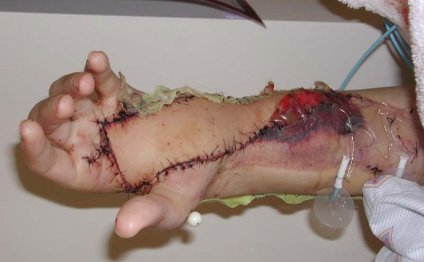
Poisonous snakes for Sale
The screeching sound of a truck skidding past woke me. Headlights cast a long arching curve beyond the pickup cab where I slept, and I struggled to remember where I was.
I was in west Texas, where my friend Dave and I had spent many hours staring at white limestone with spotlights and found nothing to speak of. We had pulled off the side of the road for a short nap before continuing our search for gray-banded kingsnakes (Lampropeltis alterna).
But what of the skidding tires? Perhaps another snake hunter had found something crossing the road behind our truck while we slept. Or maybe a tired or intoxicated driver had lost control. Unfortunately, the explanation was neither of these.
“Dave! Brett! I’ve been bitten by a coral snake! Get me to a hospital, I’m going to die!” Any lingering sleepiness instantly vanished as our panicked friend Don came running from his truck. The fleeting hope that this might be some misguided attempt at humor passed as soon as it appeared. The look on his face was pure panic.
“Where did you get bit?” The question rang out in stereo as both of us asked. Looking at Don’s extended left hand we could see two perfect pinpricks in the knuckle at the base of Don’s finger. Less than a minute had passed since Don’s arrival, but I had already lost track of the number of times he had declared his impending death. As he did so again, I admonished him that the snakebite was not going to kill him, but that the panic might. As we tried to calm him, we reloaded the trucks and raced to the hospital in Del Rio, over an hour away.
The snakebite was not severe. It was a very long night, but Don came through the experience no worse for wear physically. He also gained the profound respect for venomous snakes and the understanding of the difficulty of finding knowledgeable medical treatment that comes only after being bitten (unfortunately, I speak from personal experience).
Know What to Expect
Initially, venomous snakebites feel no different than a bite from any other, similarly sized snake, like pinpricks in your flesh. The severe consequences that sometimes follow seem completely out of proportion to this initial, visible injury. Under the best of circumstances, medical treatment for snakebite is expensive, pain can be severe and permanent injury and death are real possibilities. Most emergency room doctors are not experienced in treating snakebite and, in most places, it would be unreasonable to expect them to be versed in the treatment of this rare injury.
Liability is the single most important legal concern for those with an interest in venomous reptiles — followed closely by the legal requirements for obtaining and keeping these animals. This article is not intended to discourage readers from keeping venomous reptiles, and it most definitely is not intended as legal advice. Instead, the goal is to raise issues that should be considered by anyone who keeps, or is considering whether to keep, venomous reptiles.
The rattlesnake that bit me came into my collection from a friend who decided not to keep it after it showed up missing in the house he shared with his 2-year-old daughter. I quit keeping venomous snakes nearly a decade ago not because I was bitten, but because I was unwilling to expose my wife and children to the very serious consequences that might result if something went wrong. I also worried (as should anybody who keeps venomous reptiles) about the potential liabilities if one of my animals were to get out and/or if someone outside my family were bitten.
I kept my venomous collection in locked cages in a locked, escape-proof room. The chance of a worst-case scenario was slim, but I could imagine ways where things might go wrong. I chose to forego this risk until I could afford a separate building in which to keep my snakes. A few years later, after I graduated from law school and began gainful employment, I had the accommodations to keep venomous snakes in a separate building. However, in the meantime the laws for keeping reptiles in my state and county changed, and I have never resumed keeping these fascinating animals.
Health and Liability Insurance
By their nature, venomous reptiles always have the potential to inflict harm. You cannot afford to keep or sell venomous reptiles without insurance. Simply put, if you cannot afford insurance, then you cannot afford to keep or sell these animals. Treatment of venomous reptile bites can be expensive. The cost of treatment for my snakebite was approximately $7, 500 — a bargain compared to the cost of treating other bites I am aware of.
RELATED VIDEO


Share this Post
Related posts
Colorful lizard
A very large species of chameleon that is endemic to forests in eastern and northern Madagascar. They reach up to 68 cm (27…
Read MoreExotic venomous Snakes for sale
Whitefish, MT Price varies GREEN BUSH VIPER ATHERIS SQUAMIGERIA FIELD COLLECTED DEMOCRATIC REPUBLIC OF THE CONGO APPROXIMATELY…
Read More











